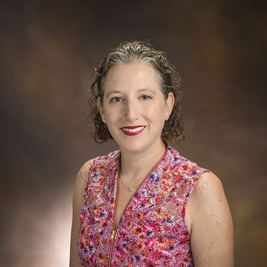
Patients with mitochondrial disease may develop a wide range of symptoms, including sensorineural hearing loss likely due to dysfunctional energy production in the inner ear. In a retrospective study, researchers from the Mitochondrial Medicine Frontier Program at Children’s Hospital of Philadelphia (CHOP) and Lund University in Sweden determined the prevalence, severity, and timing of onset for hearing loss across different genetic subtypes of mitochondrial disease. Their insights may help to improve recommendations for hearing screening in known mitochondrial disease patients, while also improving diagnostic recognition and referral by audiologists for specialty care of suspected mitochondrial disease patients.
The findings were recently published by the journal Molecular Genetics and Metabolism.
Researchers examined the health records of 193 patients with primary mitochondrial disease who were seen at CHOP Mitochondrial Medicine. These patients were then further divided into genetic subgroups based on their specific diagnoses: mitochondrial DNA pathogenic variants, which originate in the DNA located within the mitochondria itself; single large-scale mitochondrial DNA deletions, in which large segments of mitochondrial DNA are missing altogether; or nuclear DNA gene pathogenic variants, which occur in the larger pool of DNA genes in cells’ nuclei and either encode a mitochondrial protein or otherwise impact mitochondrial function.
Across all primary mitochondrial disease cases in the study, 27% were diagnosed with sensorineural hearing loss. Within the genetic subgroups, patients with single large-scale mitochondrial DNA deletions were found to have the highest incidence of this form of hearing loss (58%). Among all primary mitochondrial disease patients with sensorineural hearing loss, 79% had post-lingual onset, meaning that their hearing loss showed after the patients began speaking. This finding was particularly common in the patients with mitochondrial DNA mutations or deletions, as all patients with mitochondrial DNA pathogenic variants and single large-scale mitochondrial DNA deletions had normal hearing at birth and developed hearing loss only after they had acquired speech.
“While all patients with mitochondrial disease should be regularly screened forhearing problems, this study highlights that certain genetic categories are particularly prone to developing sensorineural hearing loss, which is something that they commonly develop in mid-childhood and can begin to experience even as late as in adulthood,” said Marni Falk, MD, Professor of Pediatrics and Executive Director of the Mitochondrial Medicine Program at CHOP and senior co-author of the study. “We hope that these data help our Audiology colleagues, who are critical partners in providing the multidisciplinary care needed to optimize outcomes for mitochondrial disease patients, to recognize as early as possible cases of sensorineural hearing loss when intervention and/or additional diagnostic evaluation for mitochondrial disease may be more beneficial.”
Featured in this article
Specialties & Programs

Patients with mitochondrial disease may develop a wide range of symptoms, including sensorineural hearing loss likely due to dysfunctional energy production in the inner ear. In a retrospective study, researchers from the Mitochondrial Medicine Frontier Program at Children’s Hospital of Philadelphia (CHOP) and Lund University in Sweden determined the prevalence, severity, and timing of onset for hearing loss across different genetic subtypes of mitochondrial disease. Their insights may help to improve recommendations for hearing screening in known mitochondrial disease patients, while also improving diagnostic recognition and referral by audiologists for specialty care of suspected mitochondrial disease patients.
The findings were recently published by the journal Molecular Genetics and Metabolism.
Researchers examined the health records of 193 patients with primary mitochondrial disease who were seen at CHOP Mitochondrial Medicine. These patients were then further divided into genetic subgroups based on their specific diagnoses: mitochondrial DNA pathogenic variants, which originate in the DNA located within the mitochondria itself; single large-scale mitochondrial DNA deletions, in which large segments of mitochondrial DNA are missing altogether; or nuclear DNA gene pathogenic variants, which occur in the larger pool of DNA genes in cells’ nuclei and either encode a mitochondrial protein or otherwise impact mitochondrial function.
Across all primary mitochondrial disease cases in the study, 27% were diagnosed with sensorineural hearing loss. Within the genetic subgroups, patients with single large-scale mitochondrial DNA deletions were found to have the highest incidence of this form of hearing loss (58%). Among all primary mitochondrial disease patients with sensorineural hearing loss, 79% had post-lingual onset, meaning that their hearing loss showed after the patients began speaking. This finding was particularly common in the patients with mitochondrial DNA mutations or deletions, as all patients with mitochondrial DNA pathogenic variants and single large-scale mitochondrial DNA deletions had normal hearing at birth and developed hearing loss only after they had acquired speech.
“While all patients with mitochondrial disease should be regularly screened forhearing problems, this study highlights that certain genetic categories are particularly prone to developing sensorineural hearing loss, which is something that they commonly develop in mid-childhood and can begin to experience even as late as in adulthood,” said Marni Falk, MD, Professor of Pediatrics and Executive Director of the Mitochondrial Medicine Program at CHOP and senior co-author of the study. “We hope that these data help our Audiology colleagues, who are critical partners in providing the multidisciplinary care needed to optimize outcomes for mitochondrial disease patients, to recognize as early as possible cases of sensorineural hearing loss when intervention and/or additional diagnostic evaluation for mitochondrial disease may be more beneficial.”
Contact us
Ben Leach
Mitochondrial Medicine Program